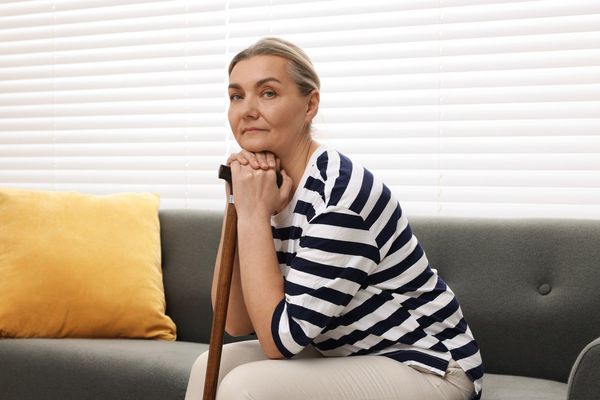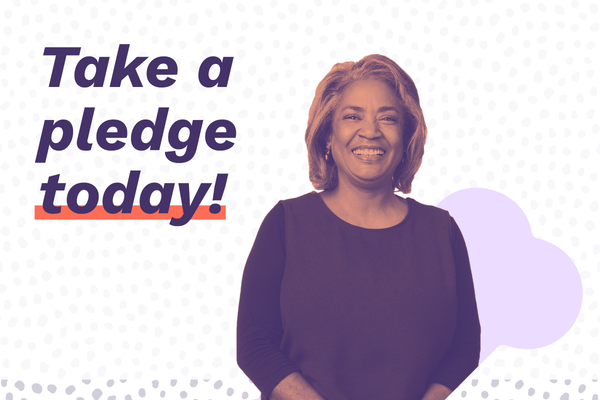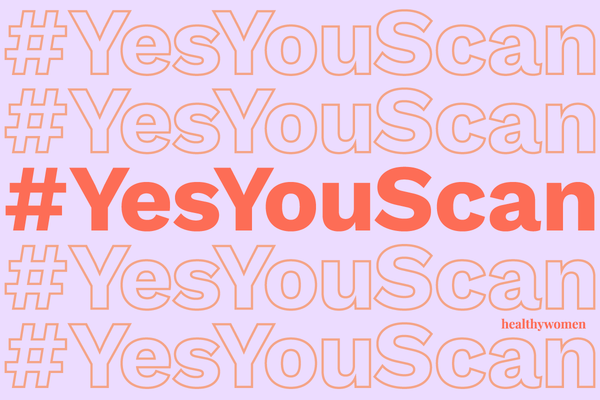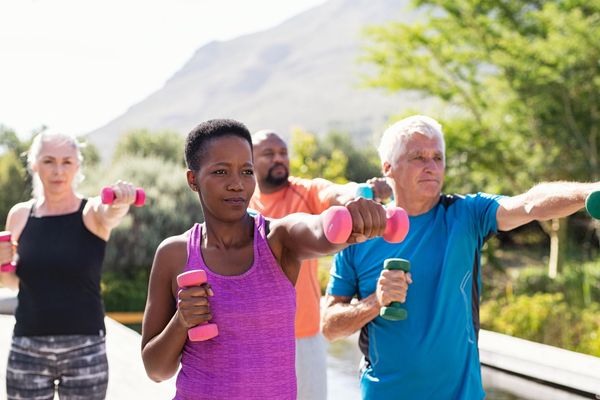One minute, I was walking across a bathroom floor in my hotel room in Arizona, heading from the shower to grab a bar of soap at the sink. The next minute, I was in the air, with only seconds to defend myself.
In those seconds, my mind told me I was falling, and my body acted reflexively: my hands stretched themselves out in an effort to break the fall. But instead of breaking my fall, I landed on my palm, which put the force of the impact on my wrist.
Minutes later, I was in an ambulance on my way to the hospital with a fractured wrist. I was the one in the three women worldwide who would get an osteoporosis-related fracture during their lifetime.
Reflecting back on that day, a few quick and obvious lessons were learned from my experience: Never walk with wet feet on a marble (or any other smooth-surfaced) floor. Always check to see that there's soap in the shower before you turn on the water. Learn the right and wrong ways to fall.
And take care of your bones, especially after menopause.
That's because the sharp decline in estrogen that comes during perimenopause and menopause leads to a weakening of our bones.
We build more bone than we lose—up until about age 30, that is. After that, the aging process accelerates the gradual loss of bone mass, which deteriorates in composition, structure and function. Coupled with the loss of estrogen and the fact that women's bones tend to be thinner and smaller than men's, it's no wonder that of the estimated 10 million Americans living with osteoporosis, about 8 million (or 80 percent) of those are women. Osteoporosis, because of its lack of symptoms in its early stages, is sometimes referred to as "a silent disease."
If you're somewhere in the window of the menopause years, remember, it's important to be aware of your bone health. Although the average age of menopause is 51, the transition, when your hormones begin their up-and-down dance (known as perimenopause) begins a few years before that, usually in your 40s (although for some women, it can be earlier or later).
Read on for what you need to know about taking charge of your bone health.
- Eat a well-balanced diet rich in calcium, vitamin D and other nutrients. Make sure your diet includes plenty of grains, nonfat or low-fat dairy, fruits and veggies and fish. If you don't get enough from your foods, you may need to take supplements or eat foods that are fortified with calcium and vitamin D (these include some breads or juices, breakfast foods, soy and rice milk and some snacks). The DASH diet, although originally created to support heart health, is also good for your bones.
- Watch your sodium. The National Osteoporosis Foundation states that consuming salty foods can cause lowered calcium levels, which can lead to bone loss. Their recommendations are to limit your intake to less than 2,300 milligrams per day. Most of the salt we get in our foods—a whopping 80 percent, in fact—does not come from the salt shaker on our tables but from prepared, processed and canned foods. And just because you can't taste the salt, it doesn't mean there is none. Here are some foods you may not realize are salty: breads, deli meat, cheese, condiments, soda and cereals. Get more tips on How to Shake the Salt Habit.
- Know your oxalates because foods containing oxalates prevent your body from adequately absorbing calcium. Although they are healthy, you shouldn't count them toward your calcium consumption. These include spinach, rhubarb, beet greens and certain beans.
- Limit your alcohol and caffeine consumption. Too much can accelerate bone loss and interfere with calcium absorption. This includes the caffeine in coffee, tea and colas (which also contains phosphorus, another possible harm to bones).
- Manage your anxiety.A brand-new study published in the journal Menopause has found a link between anxiety levels and low bone density in the lumbar spine and femoral neck, thus an increased risk of bone fractures in postmenopausal women.
- Be aware of commonly prescribed medicines you take.ConsumerSafety.org points out the association between certain medicines and an increased risk of bone loss. The elderly population has the highest risk for drug-induced osteoporosis, they say. It's important to weigh the risks and benefits with some steroids like cortisone and prednisone and with some medicines that treat type 2 diabetes. Other medicines that may contribute to bone loss include blood thinners and those that treat epilepsy, breast cancer and endometriosis. Always consult with your health care provider before discontinuing any medicine.
- Make exercise a priority. Recommended guidelines are at least 30 minutes a day at least three to four days each week, but you should also add strength and weight-bearing exercises, too, which "load the skeleton" to make bones stronger. Weight-bearing exercises include walking, hiking, stair-climbing or jogging. If you're sedentary or you discontinue an exercise regimen, you are putting your bones at risk.
- Prevent falls. Have your vision checked regularly, wear sturdy shoes, keep your home free of clutter or throw rugs that can be tripped over, install good lighting, practice good posture and do strength and balance exercises.
There are many treatments for osteoporosis, which include medications, calcium and vitamin D supplements, hormone therapy and more. Of course, being proactive can go a long way toward avoiding it in the first place. But you're not always to blame if you do develop it: age, gender, ethnicity, bone structure and body weight and family history all weigh heavily on your risk factors.
- Osteoporosis Isn’t a Given - HealthyWomen ›
- Your Guide to Bone Health - HealthyWomen ›
- How Women of All Ages Can Prevent Osteoporosis - HealthyWomen ›
- For Women, Osteoporosis Leaves Physical and Emotional Scars - HealthyWomen ›
- It Wasn’t Muscle Damage: It Was Four Fractures and Osteoporosis - HealthyWomen ›
- Clinically Speaking: Questions to Ask Your Healthcare Provider (HCP) About Osteoporosis - HealthyWomen ›







